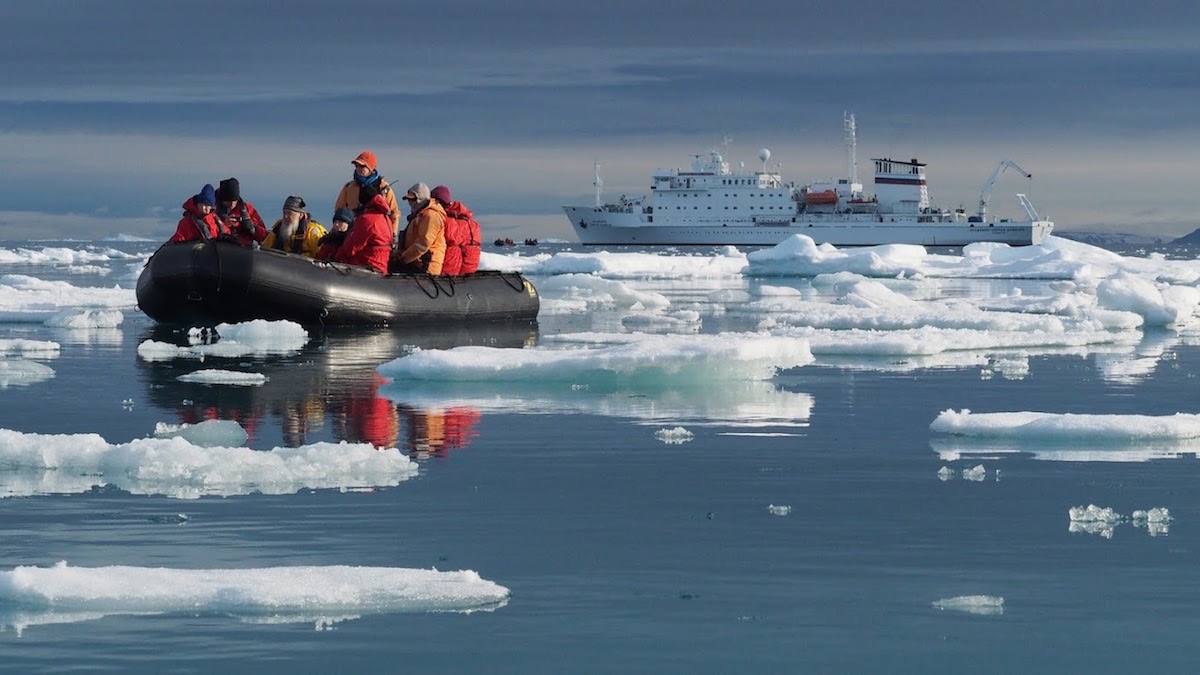
ANGIE BUTLER claims to take clients on life changing expeditions to the Arctic and the Antarctica. If this first person account of her recent voyage does not inspire you to undertake similar journeys, little else will.
Sailing out of Longyearbyen, the ‘capital’ of Spitsbergen in the Norwegian Arctic with a population of 3,000, we had barely reached 79° N when the voice of our expedition leader crackled through the ship’s tannoy, “Beluga Whales at one o’clock!” Having given the passengers the positioning of these extraordinary cetaceans, we grabbed our polar jackets and crowded on the foredeck of our small but perfectly formed ship, the Akademik Sergey Vavilov. Sure enough, a pod of some 25 ghostly white whales cavorted in the bow wave of our ship, their natural curiosity giving us a truly grand opening to our Arctic odyssey.
The passengers, 85 in total, the oldest a high spirited 82 year old grandmother and the youngest a 15 year old gangly lad, hailed from every continent in the world other than the Antarctica where, of course,population is limited. This made for an intriguing and eclectic group of people whose passions includedphotography, bird watching, ecology, geology, hiking and, in some cases, swimming in very cold water. With Captain Valery Beluga (trained in the Soviet Baltic fleet) our itinerary could and would change at any given moment. “This is an expedition, not a cruise!” was a favourite retort by everyone on board.
Spotting of a Polar Bear: A Sad Discovery
Heading north-west in bright sunshine, a polar bear was spotted on the tundra but there was something eerie about the sighting. Several staff took to the zodiacs (inflatable dinghies) with an onboard polar bear expertleading the charge. On arrival, it was found to be dead. The passengers were summoned to follow. We now had the opportunity to see a polar bear up close and personal – a large male, painfully thin, with a tag pinned to its ear, straddled on its stomach, as if it had collapsed while walking.
Once back on the ship the information on the tag was relayed to scientist Dr. Jon Aars at the Norwegian Polar Institute in Tromso. We would have to wait for a reply to learn more about this cheerless yet fascinating find.
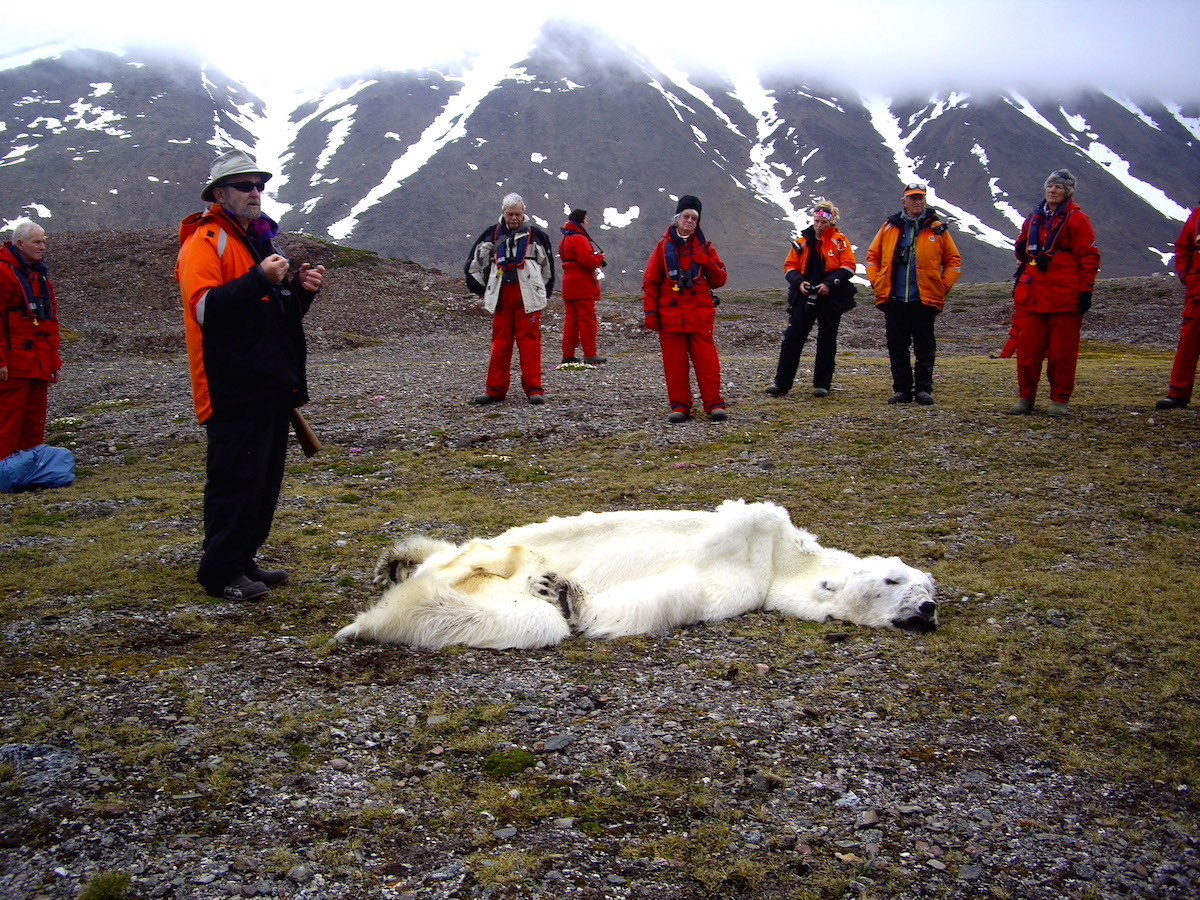
Clicking Away in 24-Hour Daylight
We had much to fit into our expedition and each morning, no sooner was breakfast finished, with the help of the wonderful international staff, we climbed into our Arctic suits and took to the zodiacs to cruise or make landfall. The 24 hour daylight between July and October proffers a frenzy of all living creatures on Svalbard and we were hell bent on recording it.
Point and shoot cameras jostled with lenses as big as bazookas as everyone snapped away at their favouritecritter. We bounced on the swell beneath sheer cliffs peppered with thousands of kittywakes, glaucous gulls and the kleptoparasitic (food stealing) Arctic skua. Skuas are virtuoso egg-snatching, chick-crunching flying machines that terrorize seabirds into disgorging their food to produce ready-made meals.
Hoity-toity puffins perched on rocks appeared to look down their red, yellow and blue beaks at us. The jittery Arctic fox scavenging for fallen chicks could only show off its brindle summer coat having lost its much coveted white winter fur a few weeks earlier. Once hunted in thousands but now trapped under regulation, this surprisingly small weasel-looking creature weighs between 2.5 – 5 kg.
The walrus devotees had several opportunities to pay homage to the 1,500 kg beached slugs that lie around flapping their flippers to scratch and scratch and well…just scratch. Hunted virtually to extinction for their ivory they are making a slow comeback.
The ‘flying penguins’, the black and white Brunnich’s guillemots lay their eggs on sheer cliff ledges, pear shaped so as to not roll off the edge. Parental duties such as egg-sitting and chick watching are shared. The sky is awash with flying penguins as they undertake fishing forays many kilometers out to sea. By the time the chick is three weeks old and not yet fully fledged, it must leave its precipitous ledge and launch itself into the open sea hundreds of meters below. Sometimes several adults join it, shrieking encouragement as it glides and flutters during this perilous descent. Some may plop on the ground and have to run the gauntlet of the rapacious arctic fox and glaucous gull. If it reaches the safety of the water it is joined by father guillemot and expected to swim as much as 50 kilometers to the wintering areas. Mother guillemot takes the shorter route by air.
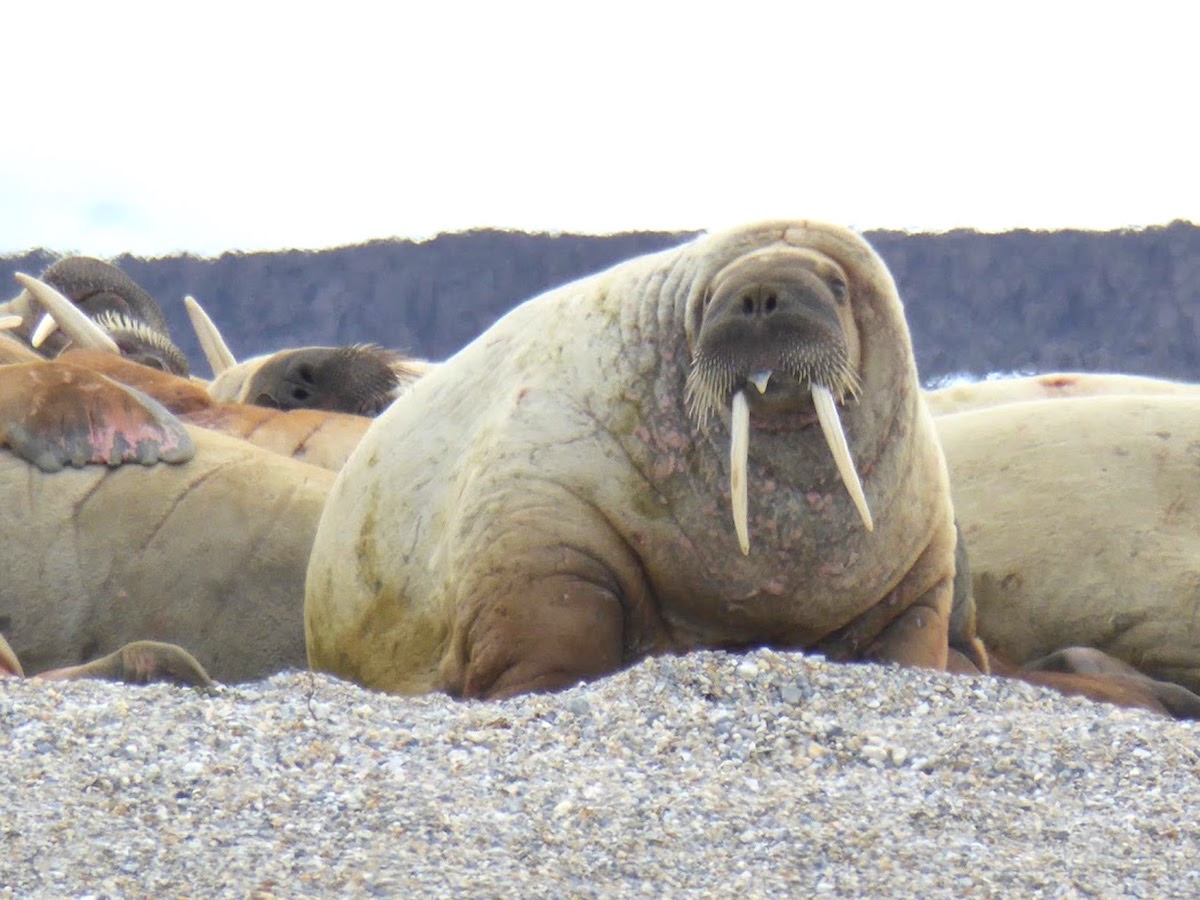
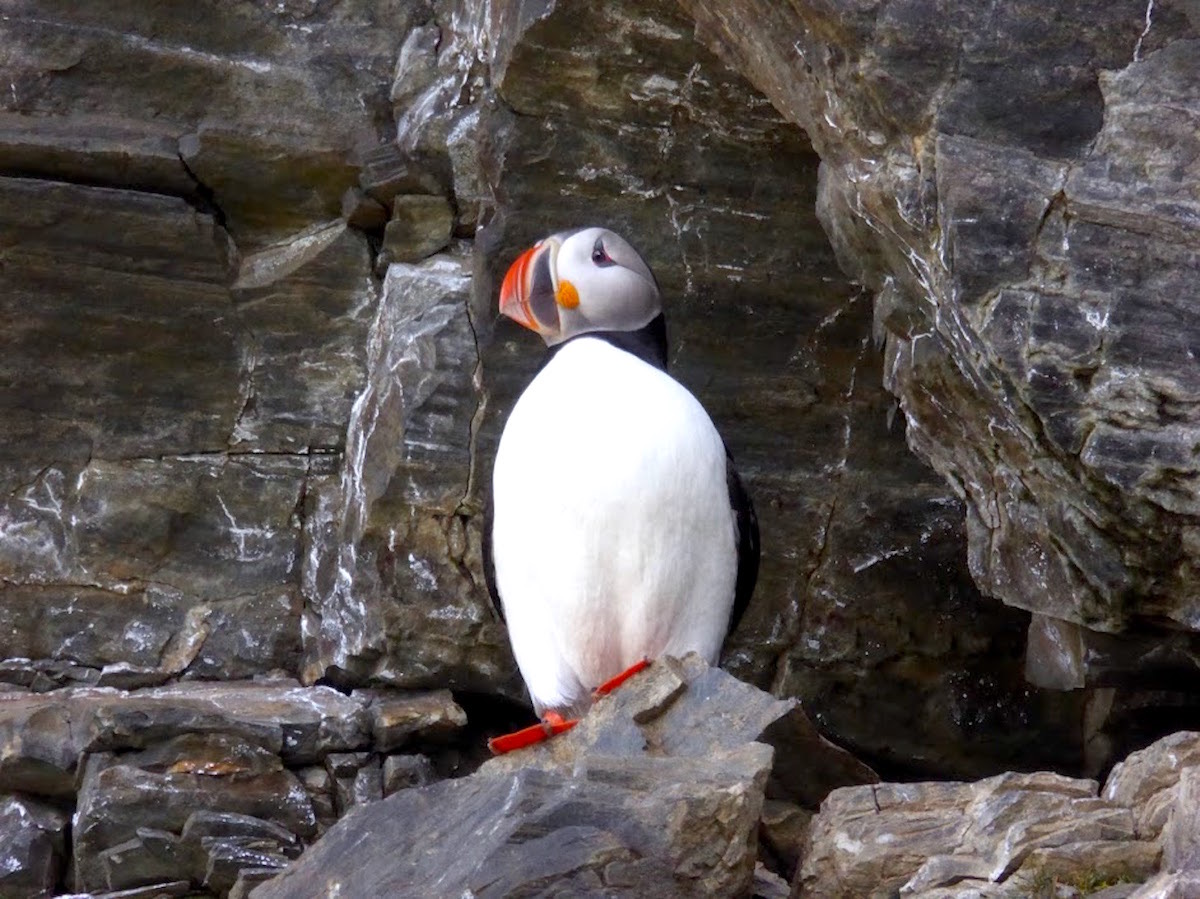
Through Fog and Ice
We continued north-east for the next four days, dipping into nooks and crannies, making landfall and hiking across the permafrost, scrambling up moraines to gaze down magnificent glaciers riven by crevasses. By the time we left Texas Bar, a hunting hut built in 1927 on the northern coast of Liefdefjorden, we had seen very little sea ice. We turned our bow northwards and headed into the frozen wastes.
At 80°, 1110 kilometers from the North Pole, we entered into a fog, an icescape of smoke and mirrors. It swirled about the ship, the bow just visible, cut effortlessly through the ice as easily as a knife through fondue icing. Suddenly, theatrically, the miasma lifted to reveal a perfect specimen of a magnificent fully grown healthy female polar bear upon its kill on an iceberg. This is what we had come to see and for several hours we had the privilege of watching her sniff the air before getting back to her feast. Finally, the expedition leader decided the bear deserved the isolation that seal hunting demands. Stealth and concentration could bag another unsuspecting ring seal asleep on the ice.
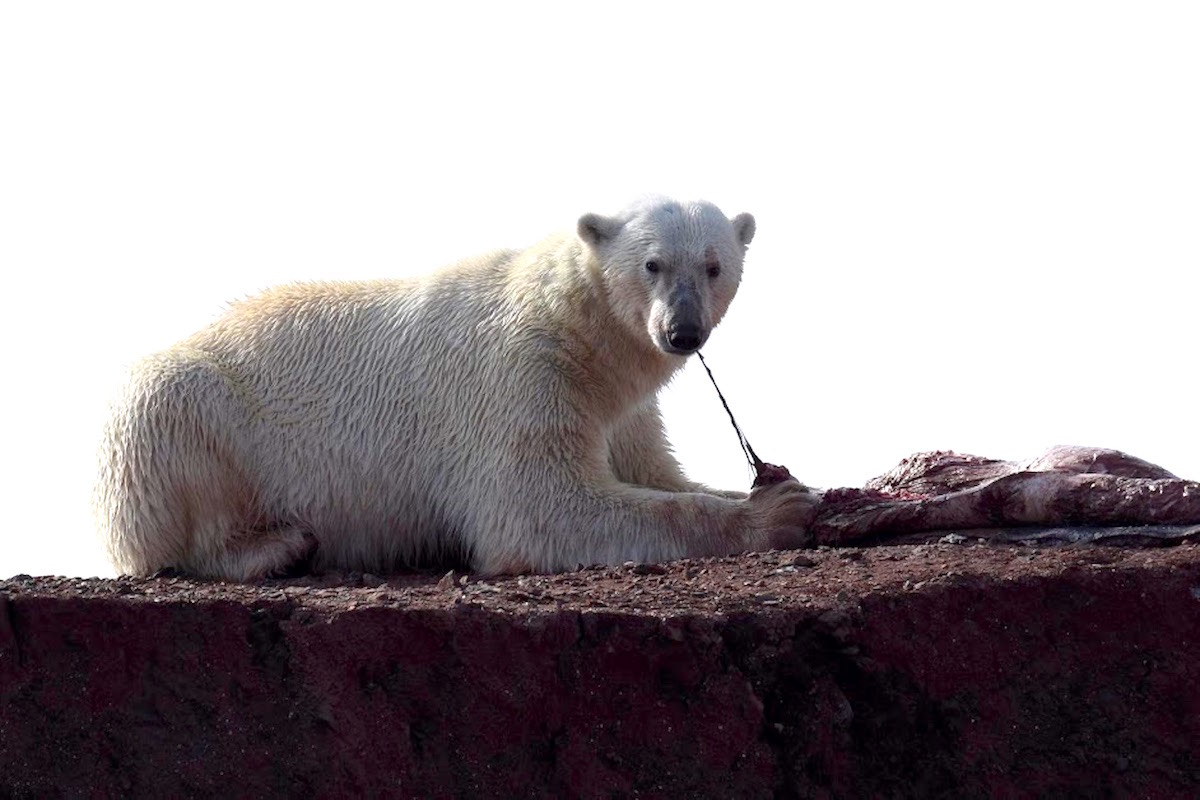
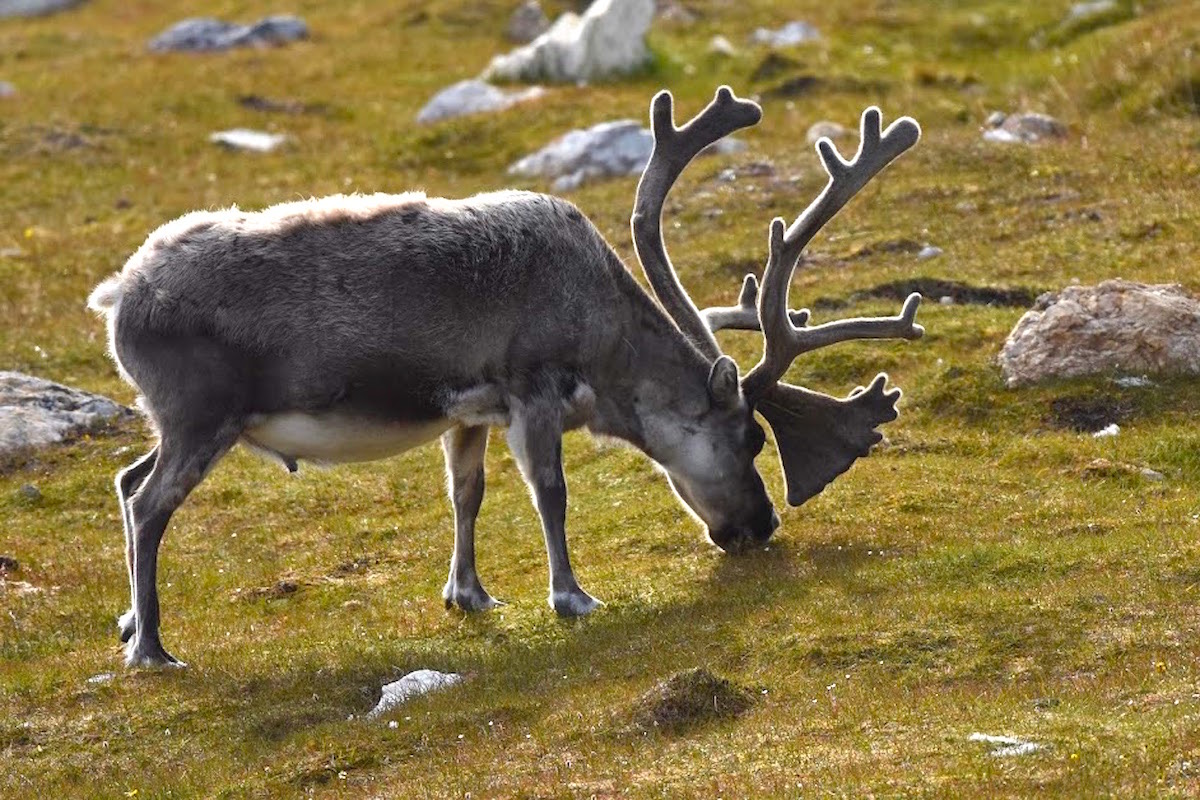
A Lilliputian World for Botanists
We turned south to continue our island hopping. Svalbard is a Lilliputian world for botanists. Trees amount to the dwarf birch and polar willow. To study them at close quarters requires sinking to your knees and peering bug eyed at the few centimeters of height they have so gallantly achieved. They are barely taller than the 165 species of flora that survive the sunless winters in wait for the brief window of spring. Poppies, bluebells, buttercups, saxifraga with names such as Whiplash and Yellow mountain will suddenly and miraculously burst into life displaying a profusion of delicate flowers.
A Personal Mission
Personally, I was on my own mission. Three years ago, I wrote a biography called The Quest for Frank Wildbased on one of the greatest explorers of the Heroic Age of polar exploration. He was Sir Ernest Shackleton’s right hand man and, after Shackleton’s death in 1922, he immigrated to South Africa where he died 16 years later. Little was known of his life in South Africa and no one knew where he was buried. Wild was lost in life and in death that is until I found his ashes in Braamfontein cemetery in Johannesburg. Two years ago we returned his ashes to South Georgia to be buried along side his beloved ‘Boss’, Shackleton.
In 1918 at the end of the World War I, at the behest of Shackleton, Wild spent more than a year in Svalbard working for the Northern Exploration Company in a bid to mine coal.
We sailed into Recherchefjorden, south west of Longyearbyen and joining the expedition leader and a few of his staff on the early morning ‘polar bear sweep’ (making sure there were none in the area before bringing passengers on land) I had a preview of where some of Wild’s mining exploits took place.
As a biographer you need only to share the same landscapes, no matter how many years have intervened, to bring you closer to your subject. I had gazed at Wild’s farm that in 1923 had nestled at the foot of Ghost Mountain in Kwa Zulu Natal. Here I was on the other side of the world looking at soaring snow-tipped mountains and Wild’s mining project scattered with rusting iron mine carts.
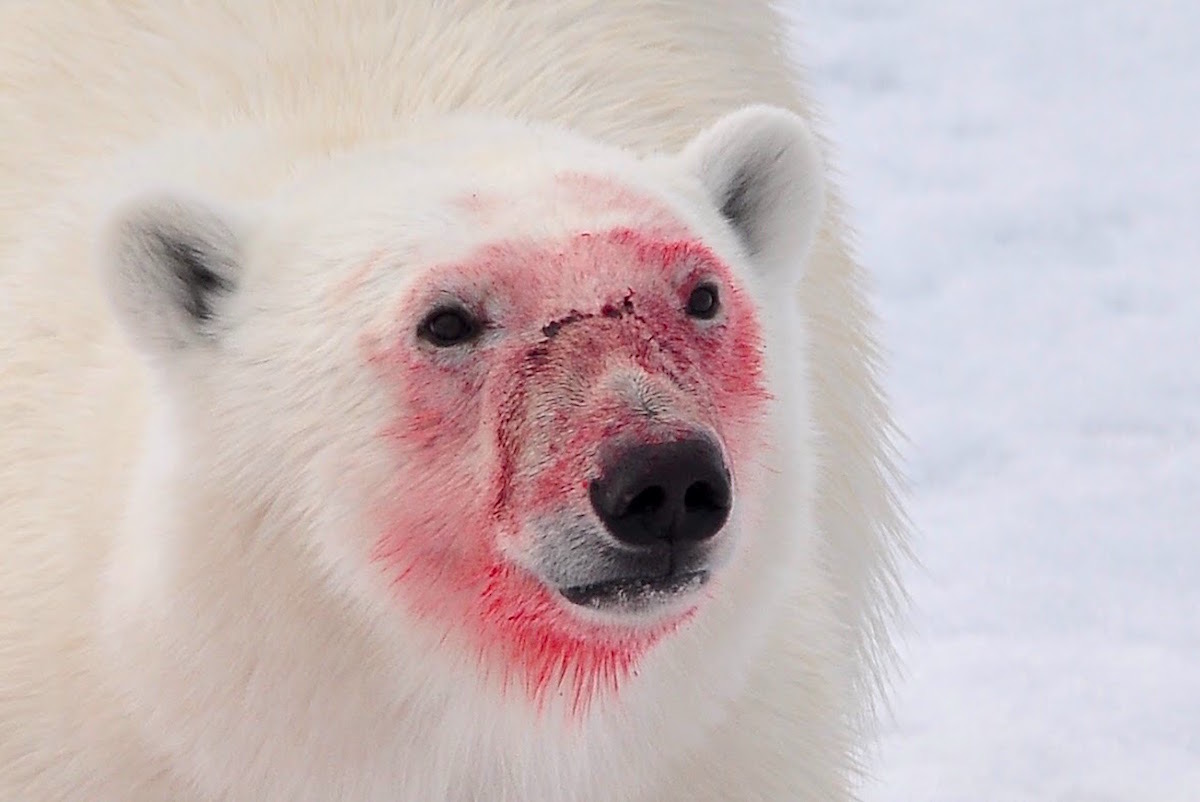
News of the Dead Polar Bear: A Warning to All of Us?
Finally news was in from the Polar Institute regarding the dead bear. The 16 year old male had been captured four months earlier and was then in reasonable shape. It had been tagged and recaptured in previous years along the western coast of the southern end of Spitzbergen. It was unusual for bears that lived in the south to travel to the north. Starvation appeared to be the most likely cause but without a necropsy it was not a forgone conclusion.
However, what was evident this year was the lack of late winter ice in the channels and fjords. Without ice,polar bears are unable to hunt seals, its prime food source. Our voyage had been thrilling, informing and inspiring but was the dead bear a cautionary warning of a changing landscape, an imbalance that threatens its very existence? Sailing in Arctic waters is an opportunity to understand and judge for your selves the threatened equilibrium of this harsh but glorious frozen landscape of the Svalbard Archipelago.
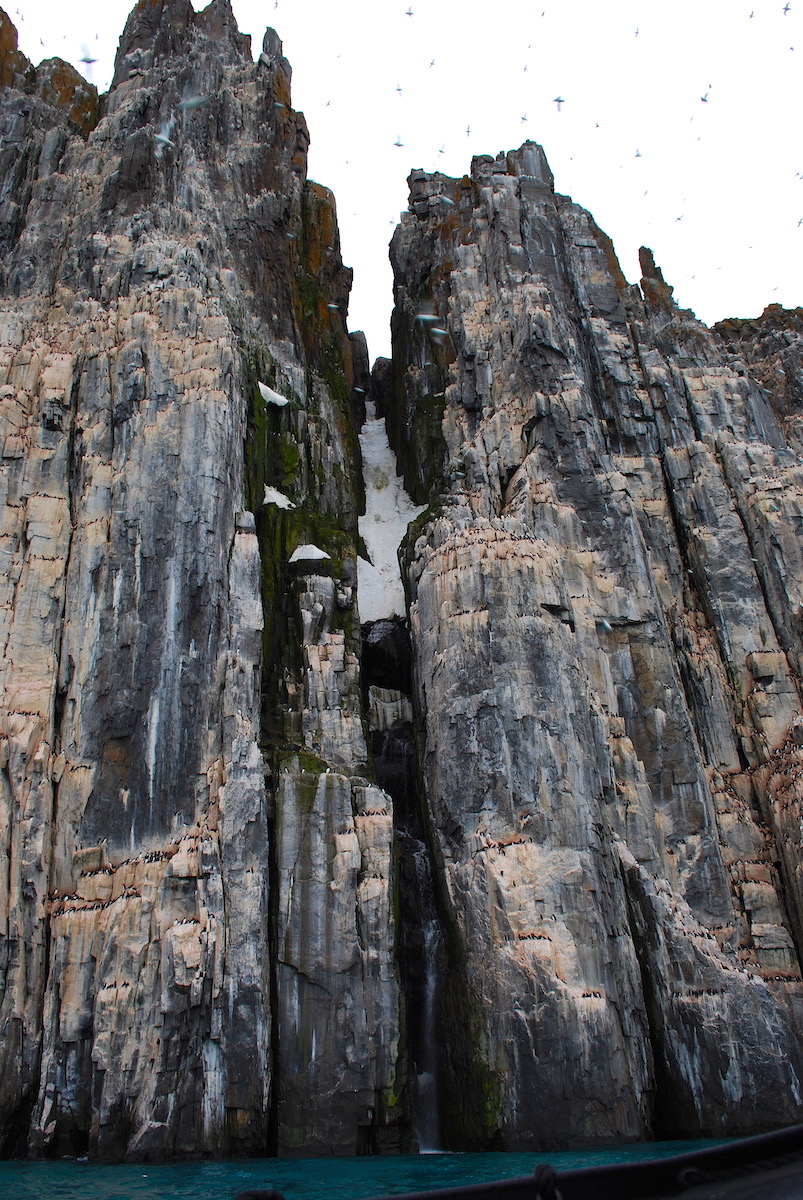
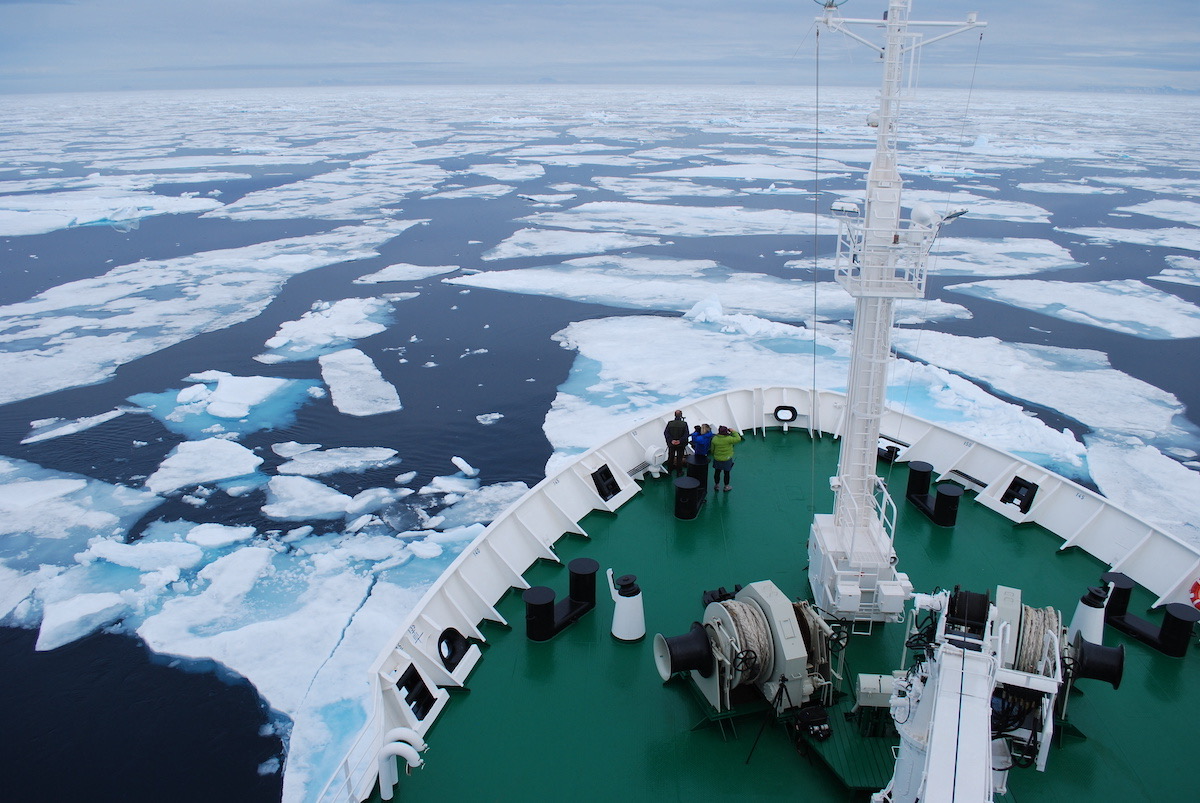

About the Writer: Angie Butler
Angie Butler was born and educated in Johannesburg, South Africa. She is the author of Ice Tracks – Today’s Heroic Age of Polar Adventure and co-founder of the polar expedition cruising company Ice Tracks Expeditions. Her most recent book, The Quest for Frank Wild, is a gripping biography of one of the greatest yet forgotten polar heroes of the Heroic Age, who died in South Africa in 1939. The book is the subject of a recent one hour BBC documentary.
